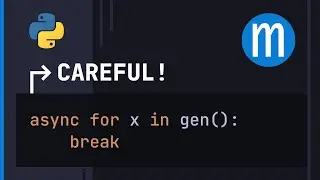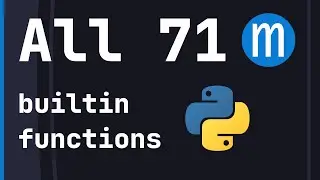Python lists remember what you did to them
Two equal lists can take differrent amounts of memory!
Two Python lists of the same size can take different amounts of memory, even if they contain exactly the same elements. A larger list can even take less memory than a smaller list. How can this be? Lists appear to remember more than just their elements, and somehow contain some information of their history. In this video we investigate this phenomenon. We see what the system getsizeof function returns and how the internal structure of a list is represented in order to find the answer.
― mCoding with James Murphy (https://mcoding.io)
Source code: https://github.com/mCodingLLC/VideosS...
libcst: https://libcst.readthedocs.io/en/late...
AST linting vid: • Python AST Parsing and Custom Linting
Structural pattern matching vid: • The Hottest New Feature Coming In Pyt...
SUPPORT ME ⭐
---------------------------------------------------
Patreon: / mcoding
Paypal: https://www.paypal.com/donate/?hosted...
Other donations: https://mcoding.io/donate
Top patrons and donors: Jameson, Laura M, Dragos C, Vahnekie, John Martin, Casey G
BE ACTIVE IN MY COMMUNITY 😄
---------------------------------------------------
Discord: / discord
Github: https://github.com/mCodingLLC/
Reddit: / mcoding
Facebook: / james.mcoding
CHAPTERS
---------------------------------------------------
0:00 Intro
1:01 Let's investigate
3:04 Under the hood of a list
4:23 How sys.getsizeof is calculated
5:06 Capacity
6:13 Why capacity != length
7:08 Geometric resizing
7:34 The answer in terms of capacities
9:19 Reality check
9:49 Thanks



















